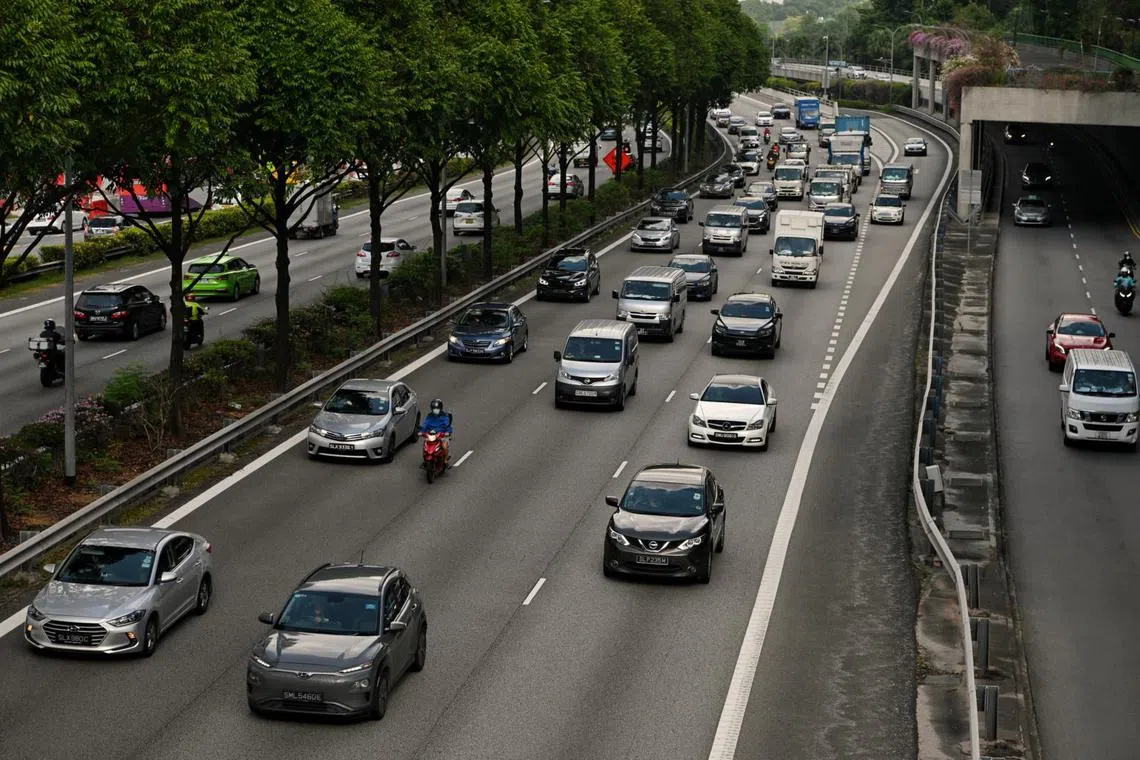Govt reduces incentives for commercial vehicle schemes, announces extension till March 31, 2025
Sign up now: Get ST's newsletters delivered to your inbox

The incentive for electric commercial vehicles in Band A will be reduced from $30,000 now to $15,000.
ST PHOTO: KUA CHEE SIONG
Follow topic:
SINGAPORE - Buyers of commercial vehicles will get smaller tax rebates when switching to electric models from April 1, 2023, under a revised Commercial Vehicle Emissions Scheme (CVES).
The incentive for light electric commercial vehicles in Band A will be reduced from $30,000 now to $15,000, said the authorities on Tuesday when announcing a two-year extension of the scheme till March 31, 2025.
Vehicles in Band B will get a $5,000 rebate, down from $10,000 now, while the surcharge for more pollutive models in Band C will be increased to $15,000 from $10,000.
The Straits Times had in August reported on the proposed CVES changes, which included reducing the rebate in Band A to $10,000, replacing the Band B rebate with a neutral band with neither a rebate nor surcharge, and retaining the $10,000 surcharge in Band C.
The industry greeted the news with dismay then, with many saying that buyers and sellers were just warming up to the idea of switching to electric and that the pulling back of incentives would be counter-productive to Singapore’s aim to improve air quality.
In a joint statement on Tuesday with the Land Transport Authority (LTA), the National Environment Agency (NEA) said it has taken note of the industry’s concerns over the higher upfront cost of electric commercial vehicles, and “made adjustments for a more gradual step-down in Band A incentives”.
Only electric models with a carbon dioxide emission of no more than 123g/km will qualify for Band A, down from 150g/km currently.
Threshold levels for carbon dioxide, hydrocarbons and particulate matter will also be lowered, while the level for nitrogen oxides will, surprisingly, be raised. The threshold for carbon monoxide will remain unchanged.
NEA and LTA said the Early Turnover Scheme (ETS), which incentivises owners of older, more pollutive diesel commercial vehicles and buses to replace them, will also be extended till March 31, 2025. The discount to replace an older vehicle will be reduced in most instances under the updated ETS.
The ETS for light commercial vehicles will cease after March 31, 2025, and both agencies said the Government will be studying other means, including regulatory levers, to encourage the early turnover of older commercial vehicles and buses in the future.
“The adjustments to the CVES pollutant thresholds will continue to ensure a balanced variety of vehicle models across bands, while the adjusted CVES and ETS incentives will also maintain momentum towards cleaner vehicles,” said the authorities.
NEA’s changes coincide with the so-called Worldwide Harmonised Light-duty Vehicles Test Procedure, which measures vehicle pollutant levels under more realistic conditions, and will likely result in higher pollutant levels measured. It will kick in here for new commercial vehicles from April 1, 2023.
Mr Neo Nam Heng, chairman of diversified motor group Prime, said the concession made by the authorities was good news.
“While this might still slow down the sales of electric light commercial vehicles, maintaining the $20,000 gap between Band A and C will deter most people from switching back to diesel modes,” Mr Neo said.
Even so, Mr Neo said some buyers may still consider diesel in the future, due to its lower cost. He noted that two popular petrol models, the Nissan NV350 and Toyota Hiace, will go from an incentive of $10,000 now to a surcharge of $15,000 next year. “Buyers of these vehicles will either go electric, or back to diesel.”
Mr Ron Lim, head of sales at Nissan agent Tan Chong Motor, said the announcement by the LTA and NEA shows that “they’re listening to the ground”.
Like Mr Neo, Mr Lim said maintaining the $20,000 gap between Band A and C vehicles “sends a clear message”, and should “deter people from going back to diesel”.
On the ETS ceasing after March 31, 2025, Mr Neo said this may cause an issue because “there are not enough COEs (certificates of entitlement) for commercial vehicles”.
“For any country, the growth of the commercial vehicle population has to keep pace with economic growth,” he added.
Since 2018, the vehicle quota system has set a zero growth rate for all vehicles except for commercial vehicles, which are allowed to grow 0.25 per cent per year. Mr Neo said this is not enough.
As at end-October 2022, only 1 per cent of the 144,728 commercial vehicles here are electric, while 7.7 per cent are petrol. The vast majority are still diesel models.


